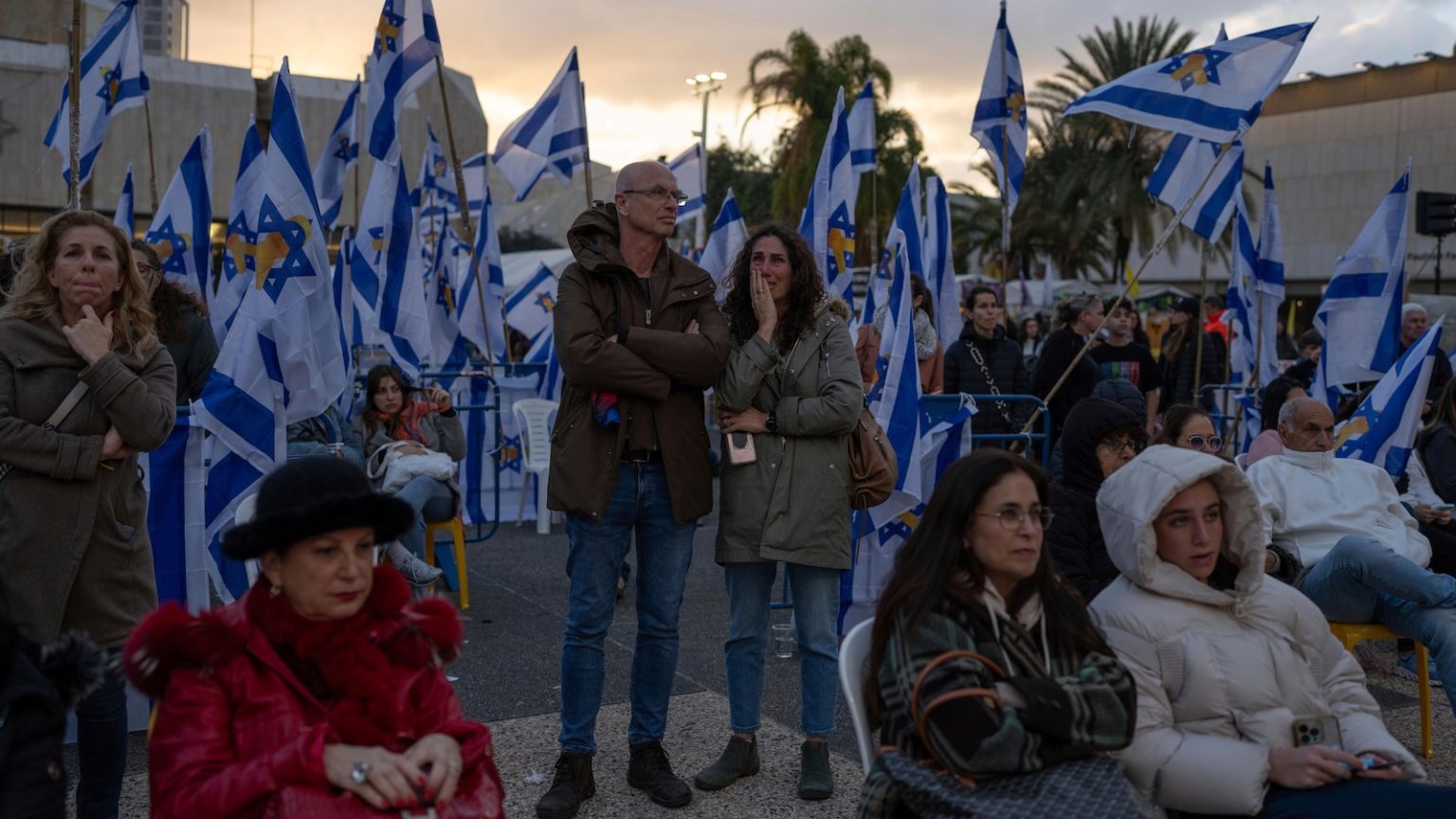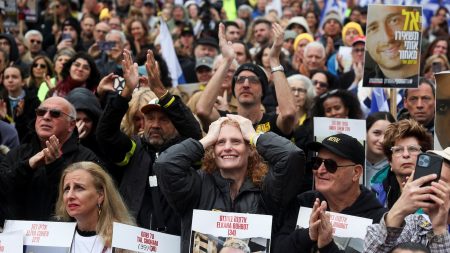Hamas Set to Release Six More Israeli Hostages Amid Tensions and Ongoing Ceasefire Uncertainty
In a development that brings a mix of hope and apprehension, Hamas is preparing to release six more Israeli hostages from the Gaza Strip on Saturday. This comes as part of a prisoner exchange deal that has been fraught with tension and mistrust between the two adversaries. The release is set to coincide with the exchange of hundreds of Palestinian prisoners, but the process has been overshadowed by a bitter dispute over the misidentification of a body returned by Hamas earlier in the week.
A Bitter Dispute Over a Body’s Identity Raises Tensions
The conflict over the body’s identity has further strained the already fragile relationship between Israel and Hamas. Israeli Prime Minister Benjamin Netanyahu has vowed to take revenge for what he described as a "cruel and malicious violation" of the ceasefire agreement. The body in question was initially believed to be that of Shiri Bibas, an Israeli mother of two, but it was later identified as an unidentified Palestinian woman. The correct remains of Bibas and her two sons, as well as 83-year-old Oded Lifshitz, were confirmed by Israeli forensic authorities. Hamas has denied any wrongdoing, claiming that the mix-up might have been caused by Israeli airstrikes in the area where the hostages were held. Despite this, the group’s military wing, the Al-Qassam Brigades, has pledged to proceed with the planned release of the six hostages on Saturday.
The Human Cost of the Conflict: Families Await Their Loved Ones
Among the six Israeli hostages set to be freed on Saturday are three young men who were abducted from a music festival during the Hamas attack on October 7, 2023. Eliya Cohen, 27, Omer Shem Tov, 22, and Omer Wenkert, 23, have been held captive for over a year, and their families are eagerly awaiting their return. Additionally, Tal Shoham, 40, who was taken from the community of Kibbutz Beeri, is also scheduled to be released. Avera Mengistu, 39, and Hisham Al-Sayed, 36, who have been held since they crossed into Gaza voluntarily years ago, are also set to be reunited with their families. These releases mark the final phase of the first part of the ceasefire agreement, which has brought a temporary pause to over 15 months of brutal warfare.
The Broader Implications of the Ceasefire Deal
The prisoner exchange has been a contentious issue, with over 600 Palestinian prisoners set to be freed in exchange for the six Israeli hostages. Among those to be released are 50 prisoners serving life sentences, 60 with long sentences, and 445 prisoners from Gaza who were arrested since the start of the war. Hamas has also pledged to release four more bodies next week, which would bring the first phase of the ceasefire to a close. However, the group has made it clear that it will not release the remaining hostages without a lasting ceasefire and a full Israeli withdrawal from the contested territories. Netanyahu, backed by the Trump administration, has vowed to destroy Hamas’ military and governing capabilities, goals that many see as mutually exclusive with the idea of a peaceful resolution.
Trump’s Controversial Proposal Adds Fuel to the Fire
The situation has been further complicated by a controversial proposal from former U.S. President Donald Trump, who has suggested the removal of approximately 2 million Palestinians from Gaza so that the U.S. can take ownership of the territory and rebuild it. The proposal, which has been welcomed by Netanyahu, has been met with universal rejection from Palestinians and Arab countries. Trump, however, seems undeterred by the negative response, stating that he would not impose his plan but would continue to recommend it. His comments have only added to the uncertainty surrounding the ceasefire and the future of the region.
The Devastating Toll of the War on Gaza and Its People
The war between Israel and Hamas has had a devastating impact on Gaza, with the Israeli military offensive resulting in the deaths of over 48,000 Palestinians, according to Gaza’s Health Ministry. The majority of these deaths were women and children, though the ministry does not distinguish between civilians and combatants. Israel, on the other hand, claims to have killed more than 17,000 fighters, though it has not provided evidence to support this claim. The offensive has also left vast areas of Gaza in ruins, with entire neighborhoods reduced to rubble. At the height of the war, 90% of Gaza’s population was displaced, and many of those who have returned home have found nothing left but destruction and despair. The ongoing conflict and the uncertainty surrounding the ceasefire have left the people of Gaza in a state of constant fear and uncertainty, with no clear path to peace in sight.















